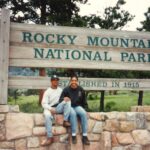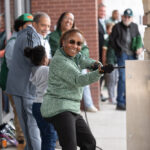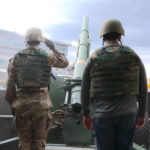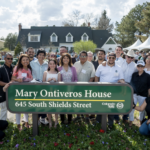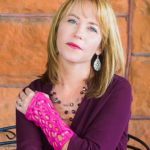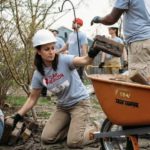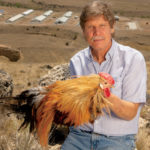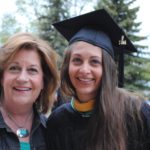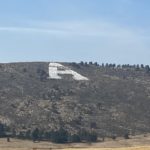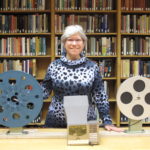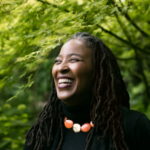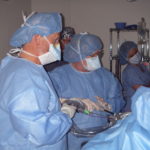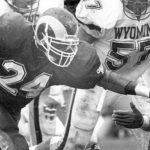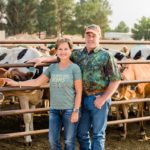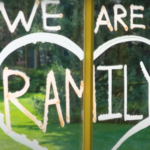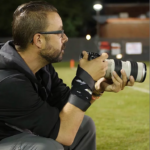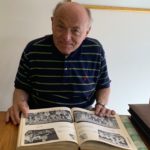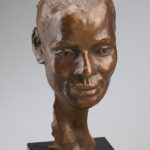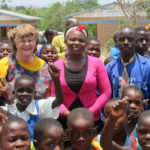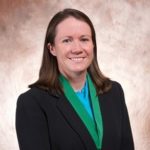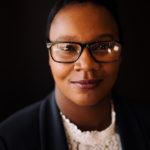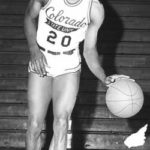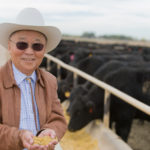“It was never my goal,” said Shirley Stanosheck (B.S., ’43) who turns 100 years old this month. “I just kept waking up.”
Stanosheck radiates a cheerful optimism that has sustained her throughout a lifetime lived in Colorado. Although her memory is starting to fail her, scrapbooks full of photos, newspaper clippings, and 4-H ribbons prompt stories from a century of family, love, and life on the eastern plains of Colorado to the foothills west of Denver.
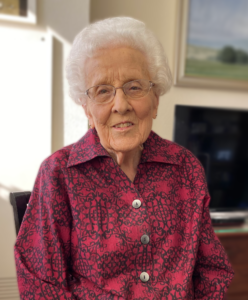
She was born Shirley May Reid on March 23, 1922, in Roggen, Colorado (southeast of Fort Collins) where she grew up on the family farm in Weld County along with her two sisters, Dorothy and Betty (B.S., ‘45), and brother, Fred. As a young girl, she remembers being painfully shy around people but much more at ease with animals.
Ribbons to Roosevelt
She joined her local 4-H club at age nine and soon developed an interest in raising and showing Angus steers, which her father kept on the farm. A ranch hand from a neighboring farm helped teach her how to properly care for and show cattle, and soon she began to win local competitions. “Four-H was my life,” Stanosheck said. “I loved it and was so involved in it. I loved my steers, but it made me cry to sell them.”
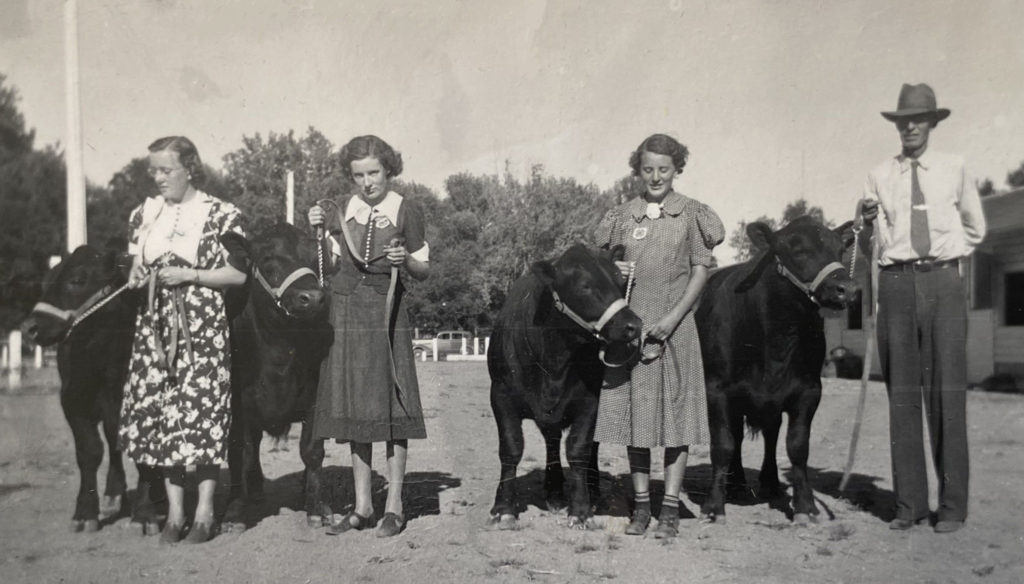
In 1937, after winning at county and state fairs, she won a 4-H trip to Washington D.C. (along with the winningest two girls and two boys from each state). The journey started when she boarded the Denver Zephyr train in La Salle, Colorado, and when the 200 students arrived in the nation’s capital they stayed at the national camp. “We slept in tents underneath the Washington Monument,” she fondly recalls.
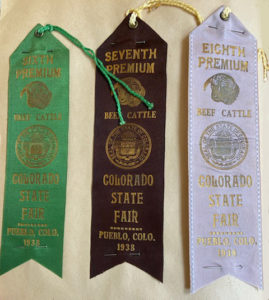
While in D.C., the students were transported to monuments and museums around the city and met various department heads and politicians. (They were even scheduled to meet President Franklin Delano Roosevelt, but his plans changed at the last minute and the meeting never happened). As part of the trip, they got to visit New York City before returning home.
Colorado A&M
The experience was eye-opening for a young woman who had never traveled further than Denver to participate in steer showmanship competitions at the National Western Stock Show. Given her 4-H experience and a desire to study home economics, Colorado A&M was the obvious choice.
“My folks were very poor and had four kids, and to this day I don’t know how they afforded it,” Stanosheck said, “but there was no question we were going to go to college. It’s the best thing that ever happened to us kids. I really loved it.” She enrolled in Colorado A&M more than two years before the United States entered World War II.
In the fall of 1939, Stanosheck was in the first class to live in Rockwell Hall, the first woman’s dormitory on campus. Although students were allowed to move in, the dining hall was still under construction, so all their meals were served at Ammons Hall for the first few months. She also enjoyed playing women’s field hockey on the Oval (the most spacious lawn on campus at the time).
Don’t Blink …
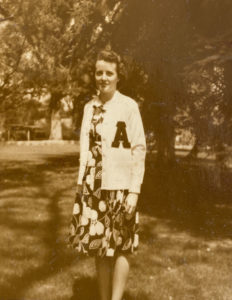
After graduation, Stanosheck was offered a job as an assistant home demonstration agent in her home county of Weld, the largest county in the state. She lived in Greeley and worked out of an office in the basement of the post office but was on the road most of the time teaching home economics (e.g., cooking, sewing, homemaking, etc.) to young women in 52 4-H clubs throughout the county.
Stanosheck’s boyfriend, Cordell Richardson, who she had grown up with in Roggen, Colorado, bought her the car she could use for her job. Her success eventually led to a promotion, and she became the extension agent for Logan County and moved to Sterling, Colorado.
After Richardson returned from the Navy at the end of World War II, he and Stanosheck married in December of 1946 and moved back to Roggen, Colorado, where they adopted two children, Sandy and Jack.
Richardson began buying and selling real estate, which he preferred to farming, so the family moved several times and lived in homes in Mead, Golden, and Longmont, Colorado. Cordell died in 1990 and Stanosheck certainly remembers the lonely years that followed.
Nearly a decade later, she met Donald Stanosheck, a new neighbor who moved in across the street from her, and in 2002, they married. He was 78, she was 80. They shared the next 15 years together before Don passed away in 2017. “Don was a wonderful man, and everybody liked him,” she said. “I had two good husbands.”
What Matters Most
When Stanosheck, a Life Member and donor to the CSU Alumni Association, reflects on her life, two things stand out: As you grow older, you rely on others more. “I feel fine because of my friends,” she said. “You have to have friends when you get old.”
And second, leading a full and engaged life is its own reward. “I was always very active and the things I’ve done have been worthwhile,” she said. “You make friends by being involved in things, and some of them become lifelong friends, which is wonderful.”
As she closes in on the one-century mark, Stanosheck, who has three grandchildren and six great-grandchildren, says, “I feel very fortunate to be able to do what I can do.” Age has caught up to her in numerous ways, but she receives regular assistance from her grandson, Tobin Waugh, and a long-time friend and exercise physiologist, Jenny Christensen. “I’m so fortunate to have them.”


